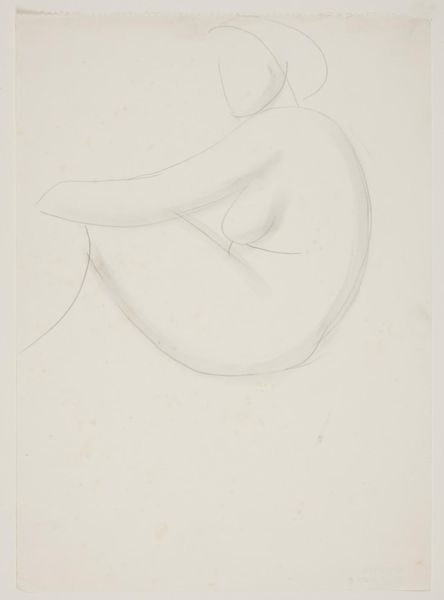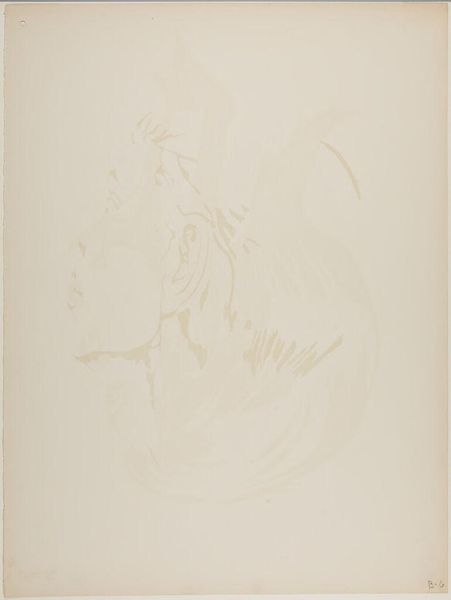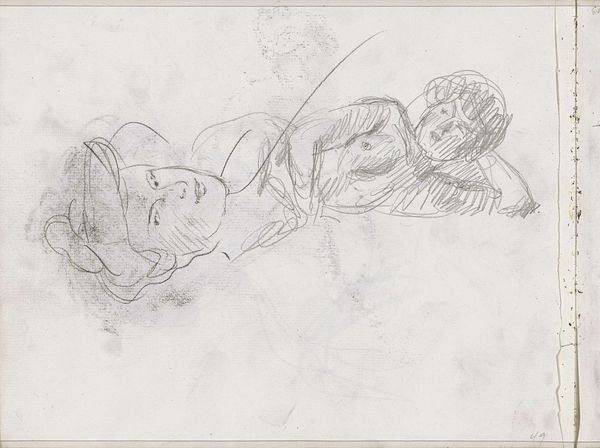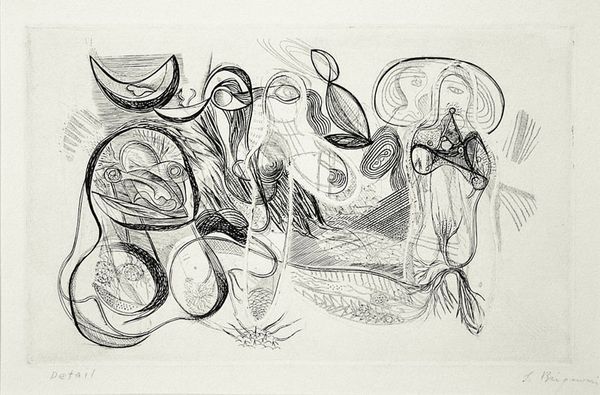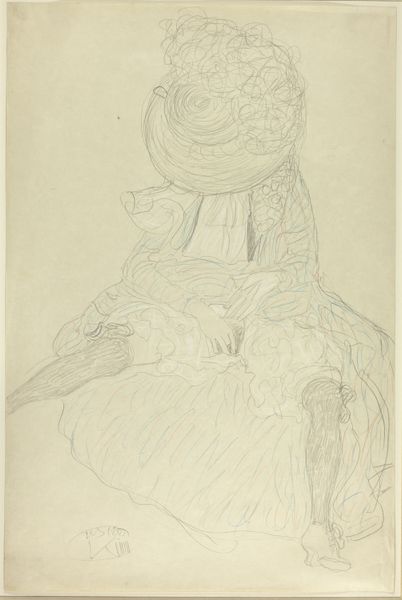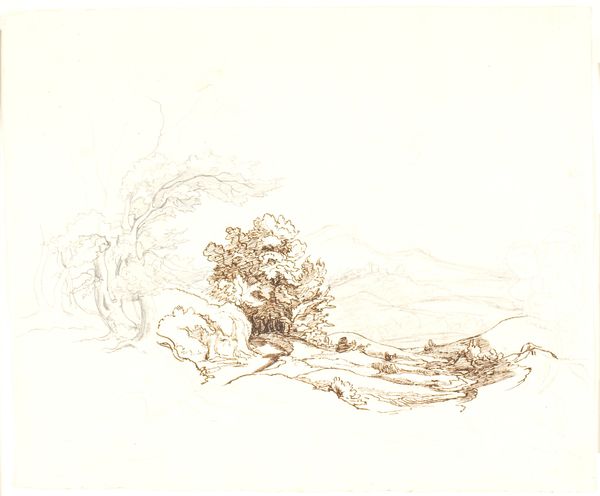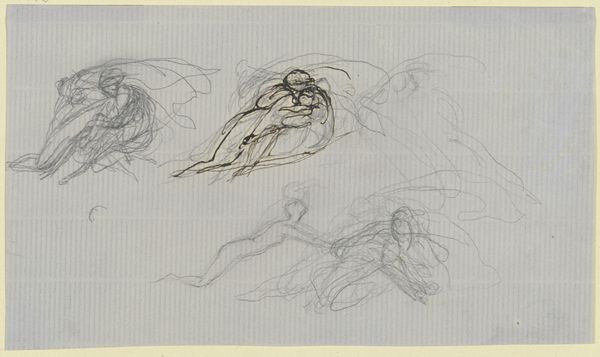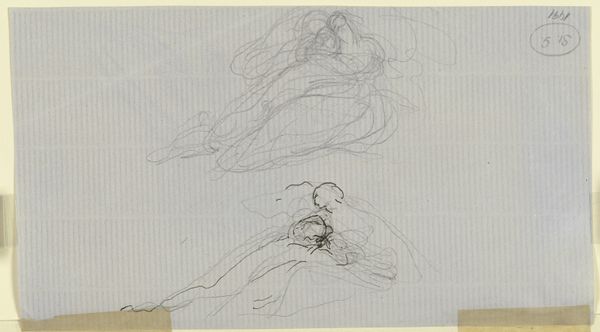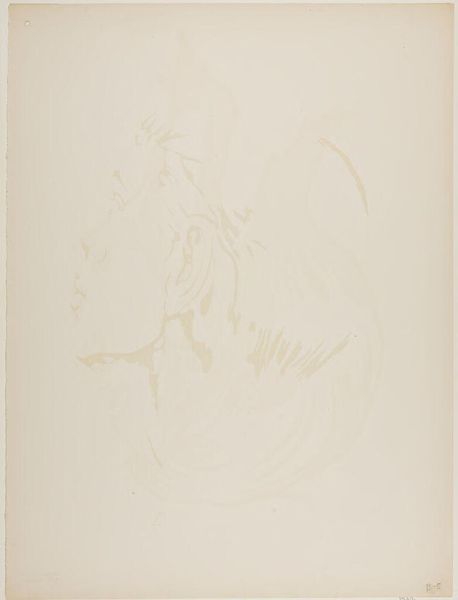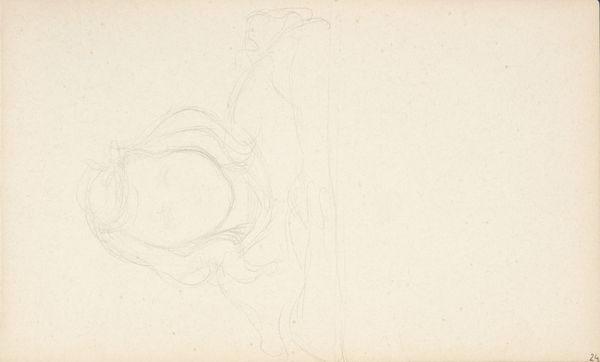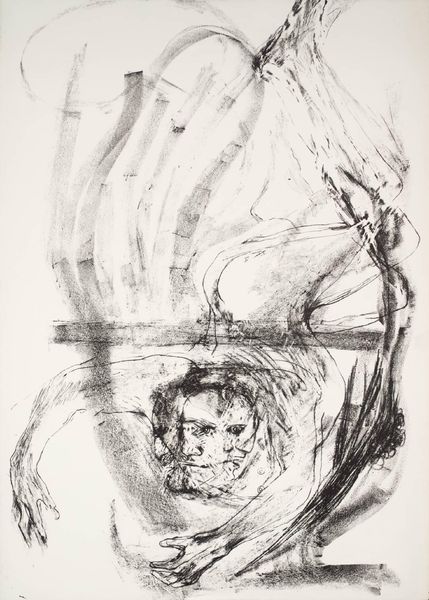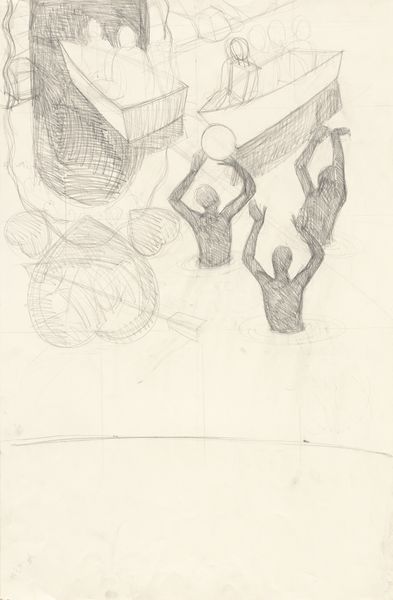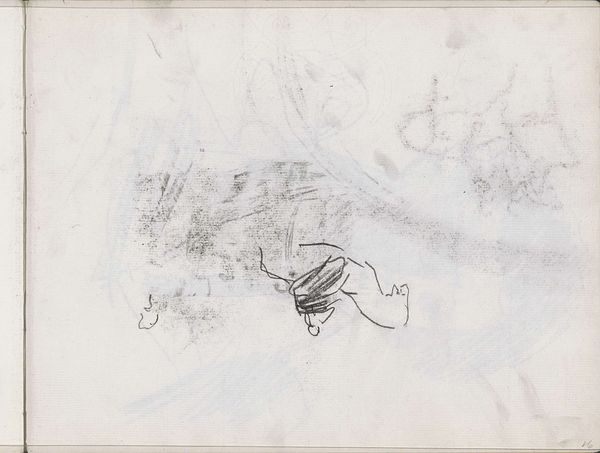
drawing, lithograph, print, etching, paper
#
drawing
#
narrative-art
#
lithograph
# print
#
etching
#
figuration
#
paper
#
expressionism
Dimensions: 205 × 328 mm (image); 480 × 653 mm (sheet)
Copyright: Public Domain
Editor: We're looking at "The Serpent is Killed," a print by Edvard Munch created around 1908 or 1909, now residing at the Art Institute of Chicago. It's made with lithography and etching on paper. The dark figure coiled around a figure locked in embrace gives off this claustrophobic, almost suffocating mood. How do you read this image, especially knowing Munch's personal context? Curator: Given Munch's history of mental illness and his preoccupation with anxiety and mortality, I view this lithograph within a socio-cultural context where anxieties about sexuality and the self were increasingly visualized and publicly consumed. The serpent, traditionally symbolizing sin or temptation, combined with this struggling human form becomes less about a straightforward narrative and more a symbolic wrestling with inner demons made manifest. Note how Munch used printmaking, a medium that enables reproducibility, therefore aligning its cultural and institutional proliferation, not isolation. Editor: That's interesting, so the choice of printmaking adds another layer of how it resonates with public reception? Curator: Precisely. The availability of prints meant this torment wasn't confined to a single canvas in a private collection. It could be displayed, discussed, and even debated within broader society, normalising discussion and dissemination beyond art galleries. It becomes a cultural mirror reflecting and shaping anxieties of the time. The loose sketching allows an unfinished idea. This makes for engagement and interpretation for each recipient. Where do you imagine it shown in society? Editor: Perhaps a literary society? I now wonder if the figure is Adam or Eve, the serpent is also temptation. I appreciate how you’ve woven its history, cultural consumption, and the very public nature of Munch's expression through printmaking. Curator: It reveals art’s position. Rather than isolate its image it helps build socio-political frameworks of meaning. I'll be pondering how these themes translate to a contemporary viewer!
Comments
No comments
Be the first to comment and join the conversation on the ultimate creative platform.
